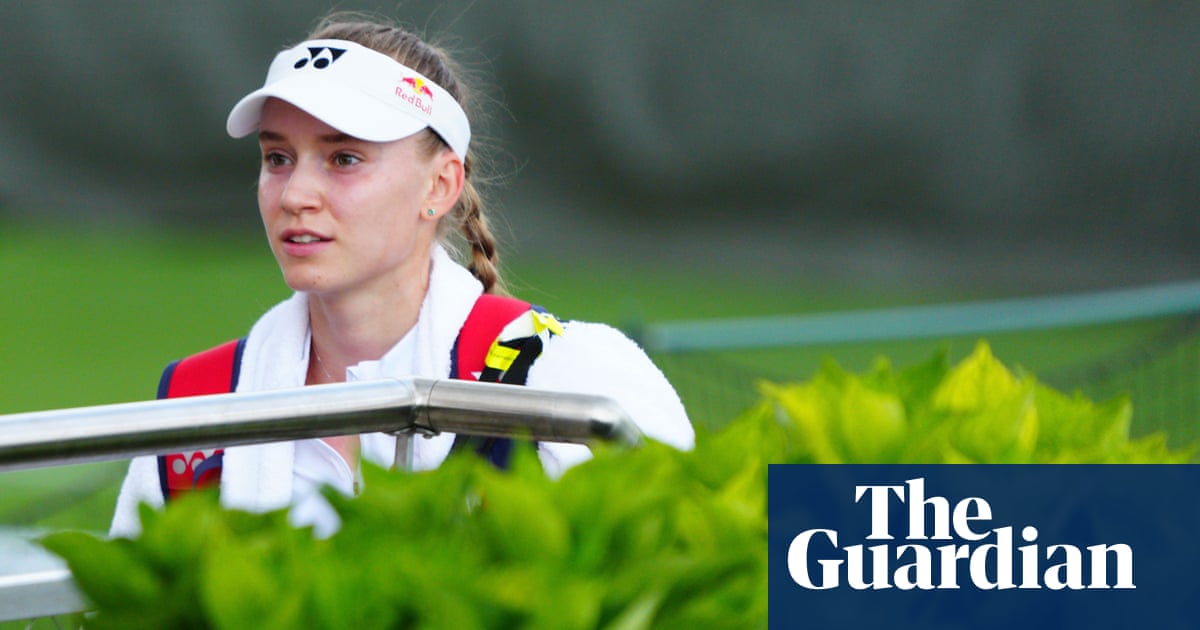
n the dying months of the 2007 women’s tennis season, a new contender was emerging. As Justine Henin dominated the world, for a few fleeting weeks the second best player around was a 19-year-old from France named Tatiana Golovin. It had been a long time coming.
Golovin grew up at Florida’s famous Bollettieri academy from the age of seven, in perpetual competition with Maria Sharapova. By 16 she was ranked 26th and a prodigy, the 2004 WTA newcomer of the year. Injuries and pressure followed, but she finished 2007 on the verge of exceptional results. “I felt everything was coming together,” she remembers.
Instead, it all fell apart. In her first tournament of the following season, her back began to throb. Golovin saw a parade of doctors and was eventually diagnosed with ankylosing spondylitis, a chronic inflammatory spinal disease. At 20, her career was over and she departed as one of the great lost talents of her era. That was the end of the narrative until two crazy days in September last year. Twenty‑four hours after Kim Clijsters announced her second return, Golovin emerged with news of an even more startling comeback and she reappeared shortly after. However, her revival has not been everything for which she hoped.
This has been a time for contemplation in tennis as the WTA tentatively returns this week in Palermo, with players considering whether to travel to New York for the US Open. For Golovin, it has been time to consider the next step of her entire career.
Even after the most satisfying careers, retirement can be an athlete’s greatest obstacle. Golovin had spent her entire youth working towards the goal of being a top player, only for it to be snatched from her. In her first months of retirement she felt shame and helplessness. She swore never to work in tennis again, but she also knew nothing else.
“What do you do? You’re 20 years old,” she says. “I had friends who were just getting out of school and were like: ‘Oh we’re gonna travel the world.’ I’m like: ‘Well I’ve actually been all over the world already.’ So, what’s the next step?”
After declining several offers to work as a tennis pundit, Golovin eventually acquiesced and has been a regular presence on French television for a decade. With her young family and her partner, the France and Toulon rugby player Hugo Bonneval, she seems happy. But some scars never fade. Golovin still dreams of her matches yet memories of her playing career are a blur.
“I think I did go into a bit of denial where you’re just like: ‘OK, I’m going to put it in the back of my head and I’m gonna pretend it never happened. Maybe that’s why I have so many difficulties remembering [my career] actually. It’s still such a trauma in my life to stop at that point of my career and in that way.”
At Wimbledon last year Pauline Parmentier of France observed that Golovin sounded more like a journalist than a former player, after a decade in the booth. Golovin winced. After some thought, she returned to her accommodation, gathered her family together and spontaneously announced that she would compete again. “No one paid attention to me,” she says, laughing. “They just continued with their dinner.”
But it was not a joke. Eighteen months earlier, Golovin had learned that new treatments could help to manage her back condition and with her son turning two years old she had more free time. She wondered what she could do to supplement her self-confidence and the answer was clear. “The only thing I knew to do better than someone else was to play tennis. I think it was maybe more getting that confidence again about who I am … Can I still do what I was meant to do and what I was one of the best at?“
She returned at a WTA event in Luxembourg with only six weeks of practice. She fell 6-3, 6-1 against the No 131 Kaja Juvan of Slovenia, but she was proud and it felt like a start. However, she had competed with an abdominal strain, which was soon accompanied by fractured ribs. In the new year, she then hurt an elbow. Her body was seemingly falling apart. After only one more match she was forced to sit down and consider whether she could fully devote herself to the sport.
“Tennis is supposed to be your whole life. Unfortunately it wasn’t my whole life because I have kids and they’re my number one priority and always will be. I thought I could have two priorities … tennis doesn’t want balance. It has to be your only baby.”
As she considered her next step, the world shut down and she cloistered in the French countryside with her family. With the tour in disarray, there is no rush to decide on her future and she is relaxed about it. Still, despite explaining the size of the commitment, it still seems desired. She even floats the possibility of returning first to doubles in order to ease back in. But after so many years, in some ways she has already won. There is triumph in the simple fact that, 11 years after quitting, she was able to authentically feel like a tennis player once again.
“Mentally I feel a lot freer than I did in the past 10 years because I know that I can play. I can go out there and try to play if my back holds up and I had a great time doing it. It’s just a matter of what do I want to do. Why not? We’ll see.”












